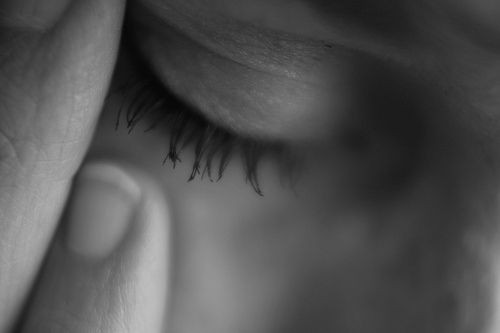Migraines Linked To Money: Throbbing Headache More Common Among People With Lower Incomes

A relationship exists between money and migraines, researchers find in a recent study. Recently, researchers have also discovered that the remission rate — when migraines stop occurring for a period or even stop occurring for good — is the same regardless of income.
"If the stresses of low income were the sole determinant, we would expect low-income people to be less likely to stop having migraines," said study author Walter F. Stewart in a press release. Stewart works with Sutter Health, a healthcare network located in northern California.
For the study, researchers surveyed 162,705 people, ages 12 and older. Participants offered information as to whether they had migraine symptoms, the age their symptoms started, and their household income. Among women between the ages of 25 and 34, researchers found about 20 percent of those from high-income households had migraines as compared to 29 percent from middle-income households and 37 percent from low-income households. For men in that same age range, five percent in high-income households had migraines, compared to eight percent in middle-income households and 13 percent in low-income households.
In short, the study confirmed that the number of people who suffer migraines is higher among those in lower-income groups. Yet, because the remission rate is similar among people from different income backgrounds, the duration of time that people have migraines is not different by income level.
“These results strongly support the theory that stressors associated with lower income play an important role in the relationship between migraine and income,” Stewart said in a press release. “Identifying these factors may be a crucial step toward developing prevention strategies."
Symptoms
What makes a migraine headache so difficult to endure is that, along with a throbbing headache, symptoms may include nausea, light sensitivity, and even vomiting. What's more, these 'super headaches' may last en entire day or even longer. Migraines are sometimes preceded or accompanied by what doctors refer to as an aura; in these instances, a patient may experience vision changes, such as flashes of light or blind spots, or odd sensations in the body, such as tingling in your arm or leg.
The Centers for Disease Control and Prevention reports that more than 37 million people suffer from migraines in the U.S. with estimates of between two and three million suffers experiencing chronic headaches. Almost five million endure at least one migraine attack per month, while more than 11 million people believe their migraines cause moderate to severe disability. Females were more likely than males to have experienced a migraine or severe headache during 2010 — 21.8 percent as compared to 10 percent.
The recommendation most often given to patients is to keep a migraine journal, in which you track the time and severity of each attack, as well as key factors that occurred beforehand: What did you eat? What did you hear? What did you see? Many sufferers find that certain circumstances or foods trigger their migraine attacks — such as eating chocolate — and are careful to avoid repeating the practice.
Most people use over-the-counter pain relievers to treat their symptoms. In some cases, medication may help reduce the frequency and severity of migraines; a doctor can provide guidance in this area.
Source: Lipton RB, Bigal ME, Stewart WF. Clinical trials of acute treatments for migraine including multiple attack studies of pain, disability, and health-related quality of life. Neurology. 2013.



























